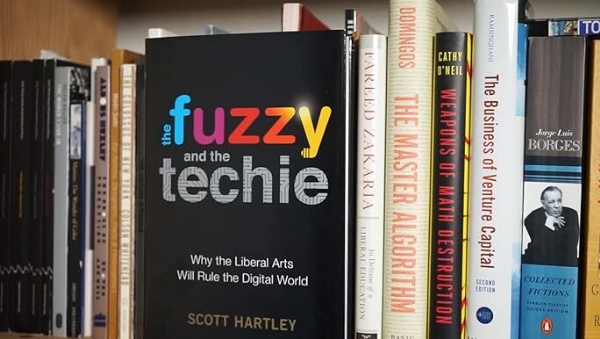Exploring the Nexus of Liberal Arts and Technology: A Review of "The Fuzzy and the Techie" by Scott Hartley
One of the key strengths of "The Fuzzy and the Techie" lies in Hartley"s ability to navigate the complex terrain of interdisciplinary collaboration with depth and nuance.
Total Views |
- Mrunmayee Soman
In a world often divided between the realms of liberal arts and STEM (Science, Technology, Engineering, and Mathematics), Scott Hartley's "The Fuzzy and the Techie" emerges as a beacon of insight, illuminating the symbiotic relationship between these seemingly disparate domains. Through a rich tapestry of anecdotes and case studies, Hartley challenges the prevailing narrative that pits "fuzzies" (those with backgrounds in the liberal arts) against "techies" (those with backgrounds in STEM fields), offering a nuanced exploration of their collaborative potential.

Hartley's narrative is brought to life through compelling examples drawn from diverse industries and contexts. Take, for instance, the story of Brian Chesky and Joe Gebbia, the founders of Airbnb. While both had backgrounds in design and the liberal arts, they leveraged their technical skills to create a platform that revolutionized the hospitality industry. This example underscores the power of interdisciplinary thinking in driving innovation and disruption.
Moreover, Hartley delves into the dynamics of innovation hubs such as Silicon Valley, where the convergence of fuzzies and techies has fueled some of the most ground-breaking advancements of our time. He highlights the case of Diane Greene, a tech entrepreneur with a background in naval architecture and computer science, whose pioneering work in cloud computing laid the foundation for Google Cloud Platform. Greene's story exemplifies how individuals with diverse skill sets can collaborate to solve complex problems and push the boundaries of what is possible.
Furthermore, the book explores the role of liberal arts education in shaping the leaders of tomorrow. Hartley discusses the experiences of Jack Ma, the founder of Alibaba, whose background in English literature and teaching provided him with the insights and empathy needed to build one of the world's largest e-commerce platforms. Ma's journey serves as a testament to the value of humanistic values in driving entrepreneurial success in the digital age.
One of the key strengths of "The Fuzzy and the Techie" lies in Hartley's ability to navigate the complex terrain of interdisciplinary collaboration with depth and nuance. He acknowledges the challenges inherent in bridging the gap between liberal arts and STEM disciplines, yet remains steadfast in his belief that such integration is essential for addressing the multifaceted problems facing society today.
However, the book is not without its limitations. While Hartley offers a compelling argument for the value of interdisciplinary thinking, some readers may find themselves yearning for more detailed analysis in certain areas. For instance, a deeper exploration of the gender disparity in STEM fields and its implications for innovation could have enriched the discussion.
Nevertheless, "The Fuzzy and the Techie" serves as a timely reminder of the transformative potential that lies at the intersection of liberal arts and technology. It challenges readers to embrace diversity of thought and to recognize the inherent value of both fuzzies and techies in driving meaningful change.
In conclusion, Hartley's book is a must-read for anyone seeking to navigate the complex landscape of the 21st century. Whether you're a student charting your educational path, an educator shaping the minds of tomorrow, a policymaker shaping the future of technology, or a tech professional striving to make a difference, "The Fuzzy and the Techie" offers invaluable insights that are sure to inform and inspire.
For further exploration, I recommend delving into related works such as "The Second Machine Age" by Erik Brynjolfsson and Andrew McAfee, and "The Innovators" by Walter Isaacson, which offer complementary perspectives on the evolving relationship between humanity and technology. As we continue to grapple with the challenges and opportunities of an increasingly interconnected world, Hartley's message rings loud and clear: the future belongs to those who embrace the fuzzy and the techie alike.
- The Author is a student of Dentistry and an avid Researcher and Reader

